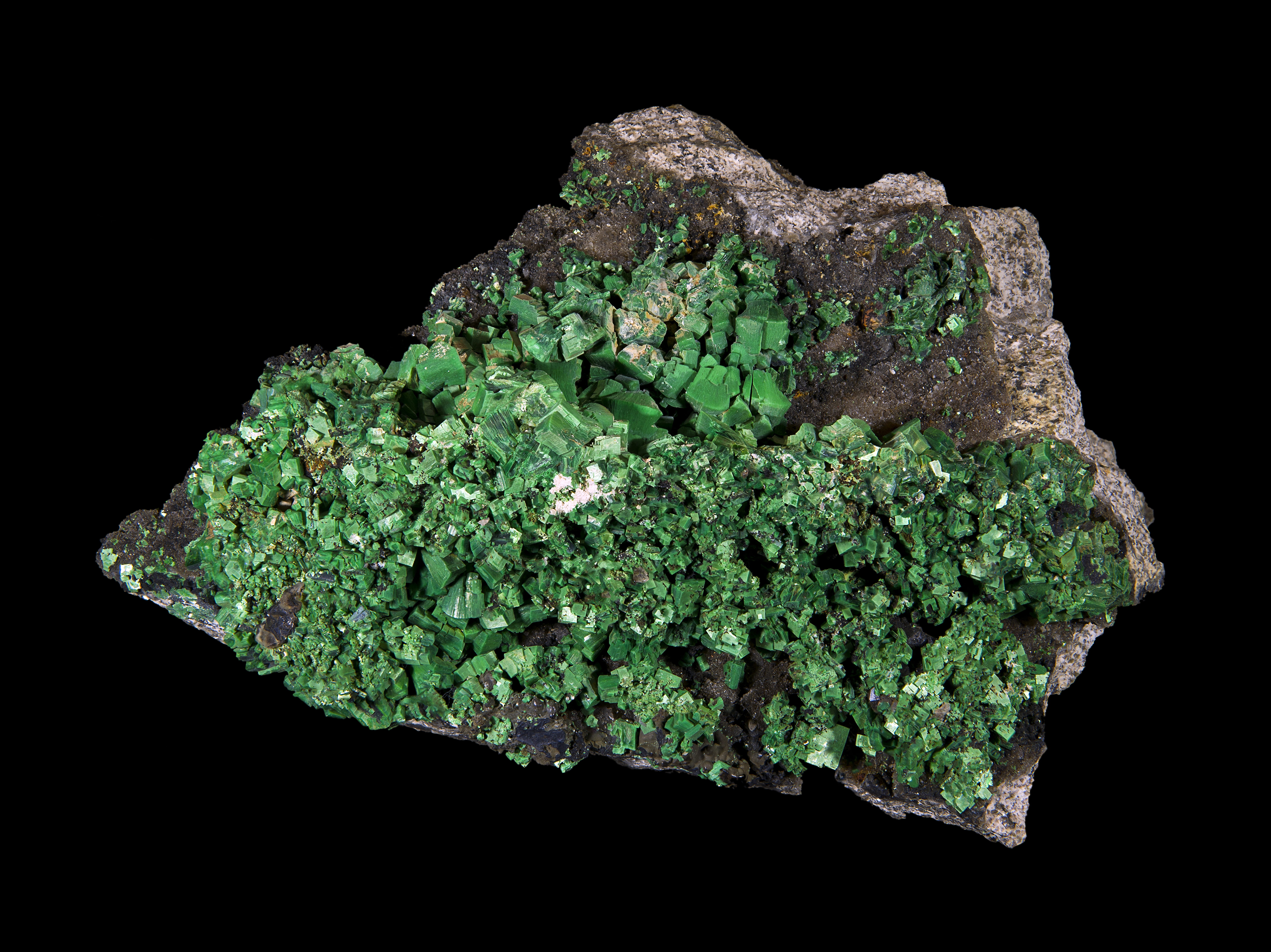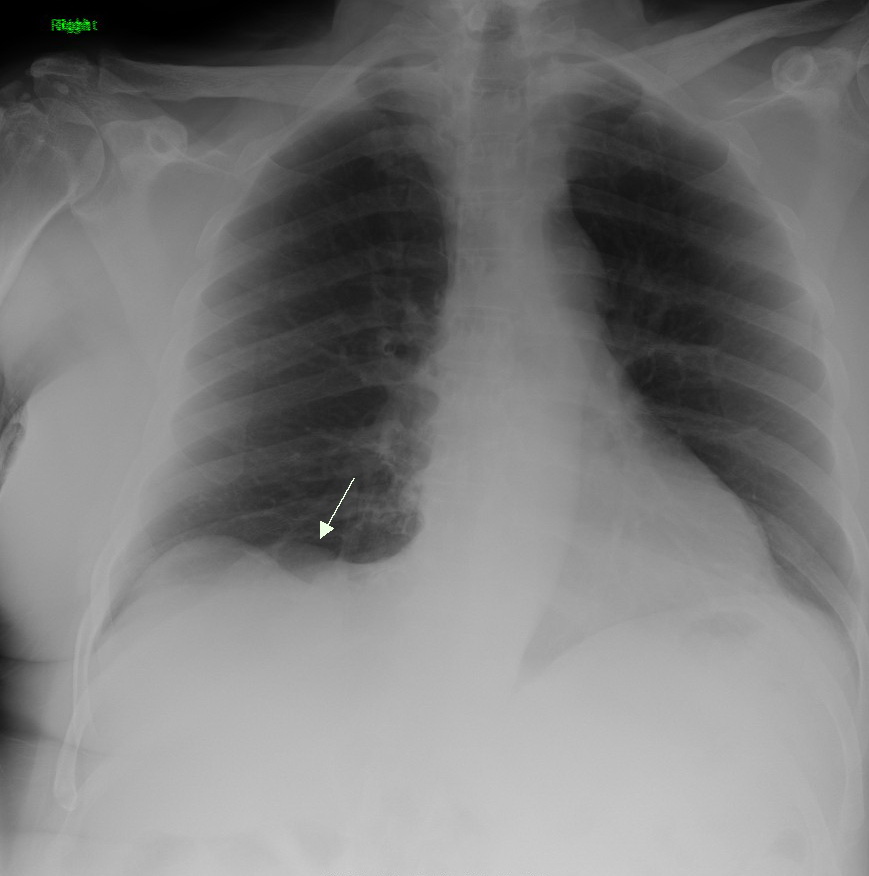|
Torbernite
Torbernite is a radioactive, hydrated green copper uranyl phosphate mineral, found in granites and other uranium-bearing deposits as a secondary mineral. Its name derives from the Swedish chemist Torbern Bergman (1735–1784), It is also known as chalcolite. Torbernite is isostructural with the related uranium mineral, autunite. The chemical formula of torbernite is similar to that of autunite in which a Cu2+ cation replaces a Ca2+. The number of water hydration molecules can vary between 12 and 8, giving rise to the variety of metatorbernite when torbernite spontaneously dehydrates. Their respective chemical compositions are the following: ;''Torbernite'' :Cu(UO2)2(PO4)2 ;''Metatorbernite'' :Cu(UO2)2(PO4)2 Torbernite's most common alternative names are copper uranite and cupro-uranite. Uses As a radioactive mineral, torbernite has some limited significance as a uranium ore. Its vibrant green color and well-developed distinctive crystals (size: mm to a few cm) make it a so ... [...More Info...] [...Related Items...] OR: [Wikipedia] [Google] [Baidu] |
Metatorbernite
Metatorbernite (or meta-torbernite) is a radioactive phosphate mineral, and is a dehydration pseudomorph of torbernite. Chemically, it is a copper uranyl phosphate and usually occurs in the form of green platy deposits. It can form by direct deposition from a supersaturated solution, which produces true crystalline metatorbernite, with a dark green colour, translucent diaphaneity, and vitreous lustre. However, more commonly, it is formed by the dehydration of torbernite, which causes internal stress and breakage within the crystal lattice, resulting in crystals composed of microscopic powder held together using electrostatic force, and having a lighter green colour, opaque diaphaneity, and a relatively dull lustre. As with torbernite, it is named after the Swedish Swedish or ' may refer to: Anything from or related to Sweden, a country in Northern Europe. Or, specifically: * Swedish language, a North Germanic language spoken primarily in Sweden and Finland ** Swedish alp ... [...More Info...] [...Related Items...] OR: [Wikipedia] [Google] [Baidu] |
Entraygues-sur-Truyère
Entraygues-sur-Truyère ( Languedocien: ''Entraigas'') is a commune in the Aveyron department in southern France. Geography The village is located from Paris and from Toulouse. Population Transportation Entraygues-sur-Truyère can be reached by bus from Aurillac (48 km) and from the industrial center of Rodez (55 km). The nearest train station and airport are located in Aurillac or Rodez. Personality Urbain Hémard (circa 1548-1592), French physician and dentist. See also *List of medieval bridges in France The list of medieval bridges in France comprises all bridges built between 500 and 1500 AD in what is today France, that is including regions which were not part of the country in the Middle Ages, such as Burgundy, Alsace, Lorraine and Savoie. ... References External links History on Aveyron.com Communes of Aveyron Rouergue Aveyron communes articles needing translation from French Wikipedia {{Aveyron-geo-stub ... [...More Info...] [...Related Items...] OR: [Wikipedia] [Google] [Baidu] |
List Of Minerals
This is a list of minerals for which there are articles on Wikipedia. Minerals are distinguished by various chemical and physical properties. Differences in chemical composition and crystal structure distinguish the various ''species''. Within a mineral species there may be variation in physical properties or minor amounts of impurities that are recognized by mineralogists or wider society as a mineral ''variety''. Mineral variety names are listed after the valid minerals for each letter. For a more complete listing of all mineral names, see List of minerals recognized by the International Mineralogical Association. A :Varieties that are not valid species: * Adamantine spar (variety of corundum) *Agate (variety of chalcedony and quartz) *Alabaster (variety of gypsum) *Alexandrite (variety of chrysoberyl) * Allingite (synonym of amber) *Alum *Amazonite (variety of microcline) *Amethyst (purple variety of quartz) *Ametrine (variety of quartz) *Ammolite (organic; also a ge ... [...More Info...] [...Related Items...] OR: [Wikipedia] [Google] [Baidu] |
Phosphate Minerals
Phosphate minerals contain the tetrahedrally coordinated phosphate (PO43−) anion along sometimes with arsenate (AsO43−) and vanadate (VO43−) substitutions, and chloride (Cl−), fluoride Fluoride (). According to this source, is a possible pronunciation in British English. is an inorganic, monatomic anion of fluorine, with the chemical formula (also written ), whose salts are typically white or colorless. Fluoride salts typ ... (F−), and hydroxide (OH−) anions that also fit into the crystal structure. The phosphate class of minerals is a large and diverse group, however, only a few species are relatively common. Applications Phosphate rock has high concentration of phosphate minerals, most commonly of the apatite group. It is the major resource mined to produce phosphate fertilizers for the agriculture sector. Phosphate is also used in animal feed supplements, food preservatives, anti-corrosion agents, cosmetics, fungicides, ceramics, water treatment and ... [...More Info...] [...Related Items...] OR: [Wikipedia] [Google] [Baidu] |
List Of Minerals Named After People
This is a list of minerals named after people. The chemical composition follows name. A * Abelsonite: C31H32N4Ni – American physicist Philip Hauge Abelson (1913–2004)alfred * Abswurmbachite: Cu2+Mn3+6O8SiO4 – German mineralogist Irmgard Abs-Wurmbach * Adamite: Zn2AsO4OH – French mineralogist Gilbert Joseph Adam (1795–1881) * Agrellite: NaCa2Si4O10F – English optical mineralogist Stuart Olof Agrell (1913–1996) * Agricolaite: K4(UO2)(CO3)3 – German scholar Georgius Agricola (1494–1555) *Aheylite: Fe2+Al6 (PO4)2sub>2·4H2O – American geologist Allen V. Heyl (1918–2008) *Albrechtschraufite: Ca4Mg(UO2)2(CO3)6F2·17H2O – Albrecht Schrauf (1837–1897), professor of mineralogy, University of Vienna * Alexandrite (variety of chrysoberyl): – Tsar Alexander II of Russia (1818–1881) * Alforsite: Ba5Cl(PO4)3 – American geologist John T. Alfors (1930–2005) * Allabogdanite: (Fe,Ni)2P – Alla Bogdanova, Geological ... [...More Info...] [...Related Items...] OR: [Wikipedia] [Google] [Baidu] |
Lung Cancer
Lung cancer, also known as lung carcinoma (since about 98–99% of all lung cancers are carcinomas), is a malignant lung tumor characterized by uncontrolled cell growth in tissues of the lung. Lung carcinomas derive from transformed, malignant cells that originate as epithelial cells, or from tissues composed of epithelial cells. Other lung cancers, such as the rare sarcomas of the lung, are generated by the malignant transformation of connective tissues (i.e. nerve, fat, muscle, bone), which arise from mesenchymal cells. Lymphomas and melanomas (from lymphoid and melanocyte cell lineages) can also rarely result in lung cancer. In time, this uncontrolled growth can metastasize (spreading beyond the lung) either by direct extension, by entering the lymphatic circulation, or via hematogenous, bloodborne spread – into nearby tissue or other, more distant parts of the body. Most cancers that originate from within the lungs, known as primary lung cancers, are carcinomas. The ... [...More Info...] [...Related Items...] OR: [Wikipedia] [Google] [Baidu] |
Aveyron
Aveyron (; oc, Avairon; ) is a department in the region of Occitania, Southern France. It was named after the river Aveyron. Its inhabitants are known as ''Aveyronnais'' (masculine) or ''Aveyronnaises'' (feminine) in French. The inhabitants of Aveyron's prefecture, Rodez, are called ''Ruthénois'', based upon the first Celtic settlers in the area, the Ruteni. With an area of and a population of 279,595, Aveyron is a largely rural department with a population density of 32 per square kilometer (83/sq mi). History Aveyron is one of the original 83 departments created during the French Revolution on 4 March 1790. The first known historical inhabitants of the region were the Rutenii tribe, but the area was inhabited previously to this, boasting many prehistoric ruins including over 1,000 dolmens, more than any other department in France. During the medieval and early modern periods, and until the 1790s, the territory covered by Aveyron was a province known as Rouergue. In 1797 ... [...More Info...] [...Related Items...] OR: [Wikipedia] [Google] [Baidu] |
Hydroxide
Hydroxide is a diatomic anion with chemical formula OH−. It consists of an oxygen and hydrogen atom held together by a single covalent bond, and carries a negative electric charge. It is an important but usually minor constituent of water. It functions as a base, a ligand, a nucleophile, and a catalyst. The hydroxide ion forms salts, some of which dissociate in aqueous solution, liberating solvated hydroxide ions. Sodium hydroxide is a multi-million-ton per annum commodity chemical. The corresponding electrically neutral compound HO• is the hydroxyl radical. The corresponding covalently bound group –OH of atoms is the hydroxy group. Both the hydroxide ion and hydroxy group are nucleophiles and can act as catalysts in organic chemistry. Many inorganic substances which bear the word ''hydroxide'' in their names are not ionic compounds of the hydroxide ion, but covalent compounds which contain hydroxy groups. Hydroxide ion The hydroxide ion is a nat ... [...More Info...] [...Related Items...] OR: [Wikipedia] [Google] [Baidu] |
Fluoride
Fluoride (). According to this source, is a possible pronunciation in British English. is an inorganic, monatomic anion of fluorine, with the chemical formula (also written ), whose salts are typically white or colorless. Fluoride salts typically have distinctive bitter tastes, and are odorless. Its salts and minerals are important chemical reagents and industrial chemicals, mainly used in the production of hydrogen fluoride for fluorocarbons. Fluoride is classified as a weak base since it only partially associates in solution, but concentrated fluoride is corrosive and can attack the skin. Fluoride is the simplest fluorine anion. In terms of charge and size, the fluoride ion resembles the hydroxide ion. Fluoride ions occur on Earth in several minerals, particularly fluorite, but are present only in trace quantities in bodies of water in nature. Nomenclature Fluorides include compounds that contain ionic fluoride and those in which fluoride does not dissociate. The ... [...More Info...] [...Related Items...] OR: [Wikipedia] [Google] [Baidu] |
Aluminium
Aluminium (aluminum in AmE, American and CanE, Canadian English) is a chemical element with the Symbol (chemistry), symbol Al and atomic number 13. Aluminium has a density lower than those of other common metals, at approximately one third that of steel. It has a great affinity towards oxygen, and Passivation (chemistry), forms a protective layer of Aluminium oxide, oxide on the surface when exposed to air. Aluminium visually resembles silver, both in its color and in its great ability to reflect light. It is soft, Magnetism, non-magnetic and ductility, ductile. It has one stable isotope, 27Al; this isotope is very common, making aluminium the twelfth most common element in the Universe. The radioactivity of Aluminum-26, 26Al is used in Radiometric dating, radiodating. Chemically, aluminium is a post-transition metal in the boron group; as is common for the group, aluminium forms compounds primarily in the +3 oxidation state. The aluminium cation Al3+ is small and h ... [...More Info...] [...Related Items...] OR: [Wikipedia] [Google] [Baidu] |
Topaz
Topaz is a silicate mineral of aluminium and fluorine with the chemical formula Al Si O( F, OH). It is used as a gemstone in jewelry and other adornments. Common topaz in its natural state is colorless, though trace element impurities can make it pale blue or golden brown to yellow orange. Topaz is often treated with heat or radiation to make it a deep blue, reddish-orange, pale green, pink, or purple. Although it is often associated with golden yellow and blue, it comes in a variety of colors, including colorless. The rarest are natural pinks, reds, and delicate golden oranges, sometimes with pink hues. Topaz is a nesosilicate mineral. It is one of the hardest naturally occurring minerals and has a relatively low index of refraction. It occurs in many places in the world. Etymology The name "topaz" is usually believed to be derived (via Old French: Topace and Latin: Topazus) from the Greek ''Τοπάζιος'' (Topázios) or ''Τοπάζιον'' (Topázion), from Τοπα ... [...More Info...] [...Related Items...] OR: [Wikipedia] [Google] [Baidu] |








